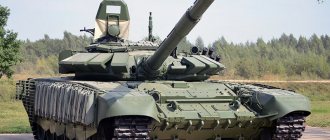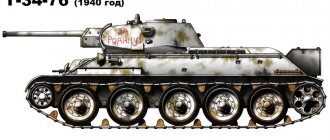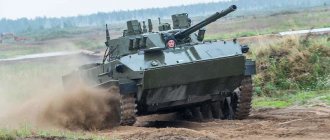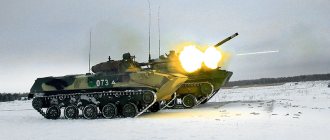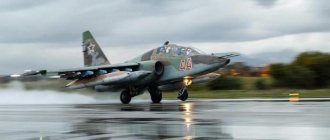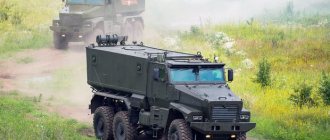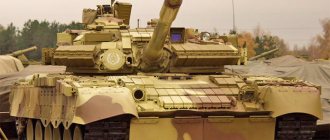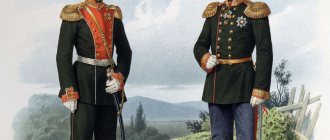Russian light combat vehicles are entering the world market. As military and diplomatic sources told Izvestia, over the past year there has been an increase in the interest of foreign customers in our armored vehicles. In addition to traditional Tiger family vehicles, potential buyers are also sending inquiries to get acquainted with the latest Typhoons. Possible customers are also considering options “K”, “U” and even “VDV”.
Until recently, domestic manufacturers were practically not represented on the international arms market in the light armored vehicle segment. American and British firms occupied strong positions there. But the situation began to change with the start of the Russian operation in Syria. Then, for the first time, “Tiger”, “Typhoon” and “Ural” showed themselves during real combat operations. Military expert Andrei Frolov looked into what the advantage of our armored vehicles is and what domestic manufacturers need to do to squeeze out foreign competitors.
Premiere of "Terminator": combat vehicles will be tested at the Zapad-2021 exercises
What training tasks will BMPTs solve on Belarusian soil?
"THUNDER" Victory rings out! Tanks of the Russian Imperial Army in WWI.
Home » Alternative tank building » “GROM” Victory rolls around! Tanks of the Russian Imperial Army in WWI.
Alternative tank building
waldemaar08 04/08/2019 2147
13
in Favoritesin Favoritesfrom Favorites 3
Various projects of armored vehicles were developed by designers in many countries long before WWI, but, as they say, there was no demand. Among the interesting projects we can recall the “land monitor” of the Italian Balbi (1854), the train of the Frenchman Bouyen (1874), the projects of Le Vasseur (1903), Burshtyn (1911), Mendeleev (1911).
With the beginning of the First World War, and especially with its transition to the positional phase, the development of armored vehicles received a new impetus.
The Russian Empire did not stand aside either. GVTU and amateur designers, representing both factories and personal initiative, began to develop many samples that more or less met the requirements of the time.
One of the branches of armored car development is here:
and here:
Pre-war tractors:
In addition to wheeled vehicles and armored trains, GVTU also thought about mounting an armored hull on caterpillar tracks. True, the tractor industry in the Republic of Ingushetia was even worse than the automobile industry. No, something was done, but how little!
https://stroy-technics.ru/article/iz-istorii-otechestvennogo-traktorostroeniya
https://agrolib.ru/rastenievodstvo/item/f00/s02/e0002070/index.shtml
In the middle of 1915, the State Technical University decided to develop a version of an armored tracked vehicle at the enterprise in Barvenkovo, Kharkov province. This choice was dictated by the fact that a small enterprise for assembling tractors was founded there, components were imported, but the outbreak of the war did not allow the organization of full-fledged production. In addition, the proximity of such enterprises as KhPZ and Gelferich-Sade-Melgose, as well as other engineering and metallurgical plants, also played a certain role.
Blinov’s student, engineer Mamin, was sent for general guidance, and second lieutenant A.M. Surin was sent for military engineering support. More about it:
https://ru.wikipedia.org/wiki/Surin,_Alexey_Mikhailovich
Because engines for tractors were not supplied before the start of the war, then Mamin and Surin adapted the so-called for the new combat vehicle. "oil" engine produced by KhPZ. Locomotive engineers especially for this armored car created (based on proven designs) an engine with a power of 100 hp. This allowed the “armored vehicle” (that’s what the resulting unit was called; later, after the English “debut”, it was renamed a tank) to “rush” on the ground at speeds of up to 8 km/h.
https://ru.wikipedia.org/wiki/Plant_named after_Malyshev#Development period 1897-1914.
https://ru.wikipedia.org/wiki/Oil_engine
There was nothing particularly original in the design. Riveted hull made of straight armor plates ½ - ¾ inch thick. The rounded parts of the turret boxes are cast.
The crew was positioned as follows:
In front on the left is the main driver, on the right, in the turret, is the machine gunner. In the rear part of the hull, mirrored, there is a second driver and a machine gunner. In the turret on the left is a machine gunner and behind him a gunner; to the right of the gun is the commander, equipped with a periscope and a director control system (like on the Bulldog BA). The loader is behind him.
The armament consisted of a 76.2 mm field gun mod. 1902, mounted on a pedestal installation, and 3 Maxim machine guns.
An interesting feature of the vehicle was the bulldozer blade installed in front (“scraper” in the then terminology). It made it possible to effectively destroy wire fences, fill ditches, lay overpasses and carry out self-digging.
In addition, they tried to put on track the hulls of the Cayman heavy armored cars produced by Helferich-Sade-Melgose. One was installed on a standard chassis, which made it possible, due to a lighter structure and a high-speed engine, to increase the speed to 10-12 km/h; and the other on the original design, which made it possible to increase the speed to 15-18 km/h. These tanks were named “Thunderstorm” and “Grad” respectively. However, they did not show anything special and remained in single copies. The more powerful cannon on the Gromy played a certain role here.
In total, 4 vehicles called the “Grom” series (“Grom”, “Gromonosets”, “Gromoboy”, “Gromoverzhets”) were built, all became part of the 1st volunteer shock armored corps “Slobozhanets” and took part in the Brusilovsky breakthrough ( Thus, the primacy in the use of tanks goes to the Republic of Ingushetia. After all, Russia is becoming the “homeland of elephants” :)).
After the stocks of parts were exhausted, production stopped, it was not possible to organize purchases or our own production, and then the revolution and... there was no time for the production of tanks at all. Tank building returned to the Kharkov region later...
Syrian experience
It is no secret that the Russian army is actively using new types of military equipment in recent local conflicts. Modern equipment of the ground forces was no exception, many modern models of which were tested in combat operations primarily in Syria; it became a testing ground for testing new products and identifying ways for their further refinement and development. We also had to operate in conditions close to combat during the peacekeeping operation in Nagorno-Karabakh, where wheeled armored vehicles were also deployed at the end of last year.
But the main combat experience was still gained in the Syrian campaign. It is noteworthy that first of all, all new Russian wheeled armored vehicles were sent to the republic. According to known data, our group, with the exception of the T-90A tanks and BMPT "Terminator", had only wheeled armored vehicles (BTR-82, AMN-233114 "Tiger-M", Iveco 65E19WM "Lynx", K-63968 "Typhoon-K", K-53949 "Typhoon-K", K-4386 "Typhoon-VDV" and Ural-432009 ("Ural-VV"). A number of K-43269 "Vystrel" armored vehicles of early series were transferred to the Syrian army As far as can be judged from open data, modern Russian lightly armored tracked vehicles were not used in Syria, although shipments of the BMP-1 BMP-1 to the army of the republic from storage bases took place.
Small armor_2
An armored vehicle "Tiger-M" with a combat module "Arbalet-DM" at a military sports festival in honor of the 91st anniversary of the formation of the Airborne Forces (Airborne Forces) at the Alabino training ground in the Moscow region
Photo: IZVESTIA/Kristina Kormilitsyna
Southern entry: ultra-protected combat vehicles will be delivered to Ingushetia
What tasks in the Caucasus and southern Russia will the latest BTR-82 with additional armor be able to solve?
The Syrian experience turned out to be very valuable for both the customer and the developers. Wheeled vehicles were used to solve a wide range of problems. This includes guarding the Khmeimim airbase, escorting convoys, transporting personnel and civilians, as well as participating in special operations. For example, groups of Russian journalists were transported across Syria in a protected vehicle K-63968.
Unfortunately, there were some losses. From open data, it is known that several Tiger-M and Vystrel armored vehicles, as well as at least two Lynx armored vehicles, were killed in combat conditions. One K-63968 vehicle took part in the battle in September 2022, when militants attacked a Russian military police post. Despite the damage she received, she was able to break through the encirclement and take the “red berets” out from under fire.
Experience in operating new Russian armored vehicles has shown that 6x6 vehicles provide maximum comfort to the landing force, but at the same time they are larger in size and more expensive. It has become obvious that in modern conflicts the level of mine protection is the most important characteristic of an armored vehicle, since the main losses were suffered precisely from mines and landmines. The Americans faced the same challenges in Afghanistan and Iraq - where the main losses in armored vehicles also came from various explosive devices.
Small armor_3
Armored vehicle "Ural-VV" (Ural-432009) of the Russian Guard during the parade dedicated to the Victory in the Great Patriotic War
Photo: IZVESTIA/Alexander Kazakov
4x4 vehicles have proven to be more optimal in terms of the cost-effectiveness criterion. They use units from serial machines, which can significantly reduce the cost of the product and increase the service life to several hundred thousand kilometers. This also facilitated the delivery of such equipment to the theater of military operations by military transport aircraft - for example, by An-124-100, Il-76MD aircraft. Although during the Syrian operation there were also separate deliveries of Lynx and Vystrel armored vehicles by sea. An important advantage of wheeled vehicles is their high reliability. Thus, in the very difficult conditions of Syria, individual armored vehicles' mileage reached 100 thousand km. And yet the machines continue to be used.
Changed to “Lens”: medical armored cars will enter the army en masse
These ambulances are distinguished by their unique maneuverability and protection, and their equipment allows them to save seriously wounded people right on the battlefield
From the Russian Federation to the Russian Empire
The history of the formation of the Russian state is marked by various stages - from rapid development to catastrophic falls and compression of its territory. Even today we are going through a far from rosy stage. After the collapse of the Union, the disintegration of the post-Soviet and Eastern European space and the deliberate actions of the West to create painful points of tension along the perimeter of Russian borders (Belarus, Ukraine, Nagorno-Karabakh, Kazakhstan) clearly demonstrate the vulnerability of Russia in its current state. The territory and peoples of the former Russian civilizational space are successfully used by geopolitical opponents to limit the capabilities and strangle Russia as one of the world centers of power and influence.
Taking into account the fact that the main purpose of statehood is to ensure the national interests of the people, aimed at their prosperity and strengthening the power and security of the state, the expert community is discussing various ways to strengthen Russian statehood, including: integration into Western civilization, development within the framework of a purely “ Russian state" and the restoration of the powerful Russian civilization (empire), as it was until recently.
Let's see which of these options most optimally realizes national interests and what mechanisms are advisable to use for its implementation.
An attempt to integrate into Western civilization in the 90s showed how vicious and destructive this path is. It can only lead to the degradation and absorption of Russian civilization, since, based on historical characteristics, the peoples of Russian and Western civilizations have different traditional values, different civilizational codes and are incompatible by nature. They are antagonists in their views on the world order, and their confrontation is inevitable; there has been and will continue to be a fierce struggle between us for survival and influence in the world. This vicious path, imposed for more than thirty years by Russian liberals, is guaranteed to lead to the collapse and disappearance of Russian civilization.
The modern path of state development is a battle for resources (economic, human, technological, informational, military, natural), spheres of influence and markets. It is this set that determines and will determine the power and influence of the state. Russia, as one of the world's centers of power, can develop and exert influence only by fully implementing these principles.
In this regard, the isolationist path - the construction of a mono-ethnic “Russian state” in its significantly reduced capabilities without reaching historical boundaries - is also unpromising. Russia can expect serious problems, since it is fabulously rich, has a colossal territory, enormous natural and energy resources, and other world centers of power have long been trying to deprive it of all this. To maintain and develop such a territory, significant human resources are needed, and with a population of 147 million people this is very problematic. In addition, Russia today is not a mono-ethnic state; it contains autonomous formations of Bashkirs, Tatars, Kalmyks, peoples of the North and a number of other ethnic groups. Russians make up about 83 percent of the total population, and everyone gets along peacefully. The formation of an ethno-national state initially limits the possibilities of its development, since it is deprived of the advantages of integrating the interests and resources of other ethnic groups living in this and adjacent territories.
The construction of a powerful state first of all involves the formation of a political nation - the unification of a large group of people (ethnicities) connected by a unified economic structure, territory, language and culture, that is, a form of co-citizenship that presupposes the formula “one people - one territory - one state.” The unification of ethnic groups into a single nation (people) can go in two ways - on the basis of achieving material success and ensuring joint security, or on the basis of an exciting idea that can unite people to achieve it.
Russia is not some kind of limitrophe, but a historically established civilization with its own national interests and influence. The nature of Russia is inherently imperial, developed and polished over centuries with a unique imperial idea and a system of traditional values that are fundamentally different from the values of the Western world. In the process of forming the Russian Empire, in order to strengthen it and ensure national interests and security, outlying territories and peoples were not conquered, but incorporated into its composition. They were viewed as a zone of Russian vital interests, various forms of control were established over them and a security belt was formed.
At the same time, the outlying peoples and their elites integrated into the Russian civilizational space while maintaining their way of life, culture, religion, traditions and customs. To realize its interests, Russia had to invest in the outskirts, develop industry and infrastructure there, and ensure the security of the living peoples. This scheme worked for centuries, and the outskirts themselves sought to become part of the empire, receiving security guarantees and the opportunity for rapid development.
The unique ability of the Russian ethnos to absorb other cultures and peoples contributed to the successful incorporation of marginal peoples into Russian civilization. In this regard, Russia developed not as an ethnonational Russian state, but as a multinational empire, and the assembly point was the state-forming Russian ethnos, on the basis of which the Russian nation was formed. If in the West the formation of an empire led to the segregation of the included peoples, then in Russia multiculturalism worked, promoting the interpenetration of cultures and peoples.
In turn, the Soviet Empire was built on the exciting and uniting idea of building a fair society on the basis of the Russian civilizational code, and this was the meaning of the “red project”. The experience of the Russian and Soviet empires in the formation of powerful and influential civilizational formations not on Western trade, but on a military-political and ideological basis has proven its effectiveness and cannot be thrown into the political dustbin.
Why an empire and not an ethnic state? Empire is a large space in every sense, promoting the development of economic, military, political and spiritual opportunities, it is power, influence and cultural temptation. Only a great empire can bear high culture and economic prosperity in its womb.
It is precisely such formations with enormous spaces and resources that contribute to the formation of significant meanings and goals. Russia has achieved enormous success and become a superpower mainly due to its universally recognized imperial status.
After the collapse of the Union, Russia's economic, spiritual and military forces were seriously undermined. She began to lag behind in technological and spiritual development and was unable to propose a strategy for the civilizational development of the entire post-Soviet space; the initiative passed to her geopolitical opponents. In addition, a significant part of the Russian liberal elite was anti-imperial and demanded to “shed the weights” in the form of republics. In all post-Soviet countries, nationalist oligarchic regimes came to power, leading them to the degradation of local statehood, the impoverishment of peoples and the introduction of evil Russophobia. Life has shown that they are not capable of building functional states. If Russia was slowly developing, then they simply stopped in their development, and some sank into the Middle Ages.
This space has not become a no-man's land; Russian geopolitical opponents, primarily the West, quickly began to develop it, creating a ring of hostile states, squeezing out Russia, installing Russophobic regimes there and capturing sales markets. The zone of influence of the Russian Federation has narrowed almost to its borders. The events of last year with provocative attempts by the West to make Russia a global outcast and isolate it showed the need to take decisive and extraordinary measures. Russia's national interests did not require self-isolation, but decisive and offensive actions to regain its sphere of influence. Moscow finally, in December, through an ultimatum to the West, made a bid for its sphere of interests, including not only the post-Soviet space, but also the countries of Eastern Europe and unequivocally inviting the Americans to get out of there.
Necessity forces us to take such a step; the borders of the Russian Federation are narrow for Russian civilization, since they do not ensure the realization of its national interests. To create a powerful civilizational association and confidently confront the West in the economic and military sphere, it is necessary to have sufficient human resources behind you, without which it is very difficult to protect and develop existing resources.
What kind of human resource is needed, where can it be obtained from, and how can this affect the national composition of the population? For example, according to the calculations of economist Khazin, for the dynamic development of the domestic market it is necessary to have at least 300 million people. Today there are four global centers of power: the USA, Russia, the European Union, China - and all of them are significantly superior to Russia in this indicator. USA - 328 million people, European Union - 517 million, China - 1.4 billion. It should be recalled that the Soviet Union had a population of 293 million people, and together with the countries of Eastern Europe about 500 million.
All this suggests that Russia is unlikely to be able to solve its problems of revival with the available human resources; circumstances require reaching historical milestones and returning the lost population and territories. At the same time, one should not allow a critical erosion of the Russian ethnic group, the bearer of the civilizational code, and the strengthening of nationalist tendencies on the outskirts.
The most fundamental issue is the reintegration of the historical branches of the Russian people living in Ukraine, Belarus, Moldova and Transnistria. There are approximately 52 million people there, the vast majority of them are Russian/Russian-cultural people. Yes, they were treated by propaganda in a nationalistic and Russophobic style, but they are unlikely to have lost their Russian civilizational code, it has been instilled for centuries, and it will not take much time to restore it. Of course, there are particularly stubborn Russophobes there, and those who do not agree to return to the historical fold will, apparently, have to leave this territory or it is worth allocating them a part of the border area (for example, like Galicia), where they could continue to build their nationalist reserve .
About 54 million people live in the former Central Asian republics, including approximately 5.7 million Russians. There are 16 million people in the Transcaucasian republics, including approximately 0.4 million Russians. In the Baltic republics there are 6 million people and approximately 1 million Russians.
That is, there are two population groups living in the post-Soviet space, the first is the Russian linguistic and cultural community of 52 million people and the second is non-Slavic ethnic groups of 69 million people, among whom 7 million Russians live. Moreover, all these ethnic groups were part of Russian civilization for quite a long historical time and largely adopted its traditional values.
The integration of Slavic territories will allow the population to increase to 200 million, and the share of Russian (Slavic) ethnic groups will rise to 88 percent. The integration of non-Slavic territories will bring the population to 280 million, while the Russian ethnic group will be significantly blurred and will make up about 67 percent, which may already pose a problem.
Based on the principles and experience of the formation of multinational Russian and Soviet empires, it seems advisable to build it on two levels. At the first level - the creation of a Russian state with the inclusion of Slavic ethnic groups, at the second - the Central Asian, Transcaucasian and Baltic republics on a union confederal basis or under a strict Russian protectorate. For example, in the 19th century, after the conquest of the Kokand and Khiva khanates and the Bukhara Emirate (today's Central Asian republics), they were under Russian protectorate, and only the Bolsheviks included them in the state.
All this suggests that when considering the issue of the revival of Russian civilization, integration processes should occur in different directions and with different levels of integration. First of all, the integration of Slavic ethnic groups should be decided and only at subsequent stages - Transcaucasian, Central Asian and Baltic. Without the return of these lost lands, it is unlikely that Russia will be able to restore its former power. That is, the Russian Federation needs its own integration project aimed at reviving the Russian civilizational space with a protected market and a cemented nation ready to defend its interests. The project cannot take place without the formation of a Russian political nation based on the Russian ethnic group and other peoples living in the Russian Federation and on its outskirts.
To solve such a problem, Russia must have the necessary arsenal of influence - economic, military and spiritual power capable of stopping the disintegration processes of Russian civilization and suggesting ways for its revival. So far, of the three components, Russia is leading only militarily; in the economic sphere it is still far from Western countries and China; and in the spiritual sphere, a unifying idea has not yet been proposed that can capture the minds of the population and elites and encourage them to implement it. Possession of enormous resources is far from sufficient for economic and spiritual leadership; for this, Russia needs to become an example in economic and political development.
The existing vicious system of buying the loyalty of outlying elites by distributing resources and rent from their exploitation to them will have to be transformed into a mutually beneficial political, economic and cultural process of integrating the torn parts of a once single space, providing ample opportunities for activity in all spheres. This will require a change of generations of elites, and the Russian state has a wide range of tools in its hands - from “soft” power to reveal and promote the prospects and advantages of unification to “hard” power to force mutual understanding in the military sphere and the use of resources. In this matter, we need to learn from the Americans, without much ceremony about what the “international community” will think about this.
The outskirts must see the undeniable advantages of the integration association and strive to become part of it. This process is just beginning; the Russian leadership, with its December ultimatum, made a bid for a zone of its interests, and the coming weeks will show how much determination it has to defend this trend.
Yuri Apukhtin,
specially for alternatio.org
